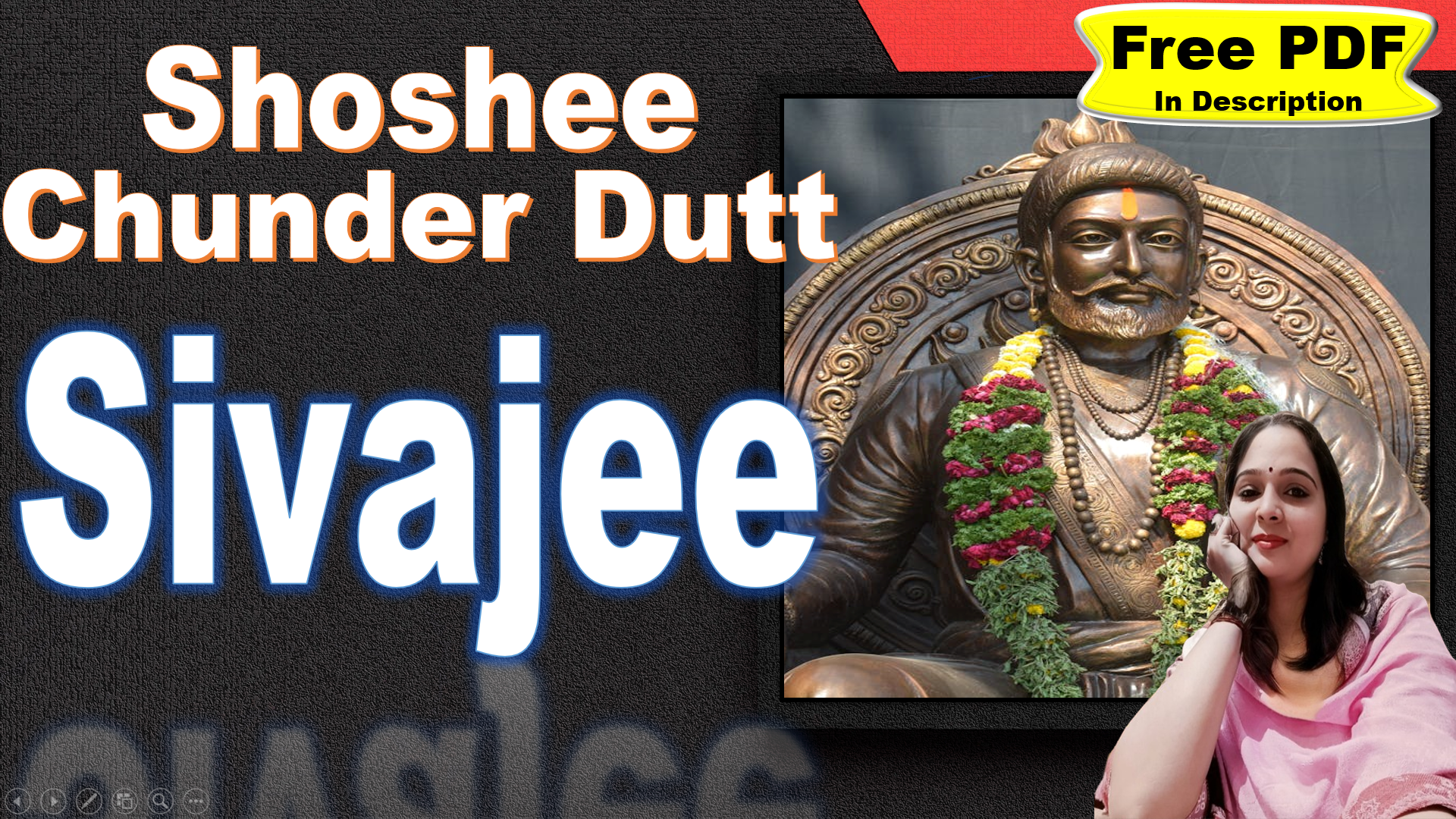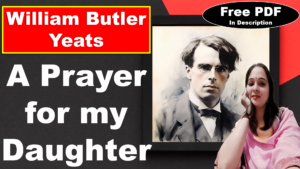Essay Type Questions
Write the critical appreciation of the poem “Sivajee” by Shoshee Chunder Dutt.
Introduction
“Sivajee” is a powerful poem by Shoshee Chunder Dutt, a renowned Indian poet from the 19th century. The poem vividly portrays the historical encounter between the Maratha leader Sivajee and the Mughal emperor Aurangzeb. It is a testament to Sivajee’s indomitable spirit and his determination to fight for his people and his honor.
Central Idea
The central idea of the poem revolves around the themes of honor, defiance, and revenge. It captures Sivajee’s reaction to the scorn and disrespect he experiences in Aurangzeb’s court, his subsequent imprisonment and escape, and his vow to seek revenge.
Structure & Rhyme Scheme
The poem is structured into ten stanzas, each containing eight lines. This form is known as an octave. The rhyme scheme of the poem is ABCBDEFE, which means that the second and fourth lines rhyme, and the sixth and eighth lines rhyme in each stanza. This consistent rhyme scheme contributes to the rhythm and flow of the poem, enhancing its aesthetic appeal.
Theme
1. Honor and Pride One of the central themes of the poem is the concept of honor and pride. Sivajee, the protagonist of the poem, is portrayed as a figure of immense pride and honor. His actions and reactions throughout the poem are guided by his commitment to uphold his honor. When he is scorned and disrespected in Aurangzeb’s court, he reacts with defiance and anger, refusing to accept humiliation. His decision to seek revenge is also a testament to his commitment to uphold his honor.
2. Defiance and Rebellion Defiance and rebellion are also significant themes in the poem. Sivajee is depicted as a defiant figure who refuses to bow down to Aurangzeb’s authority. His escape from captivity and his vow to seek revenge symbolize his spirit of rebellion. The poem celebrates Sivajee’s defiance and presents it as a commendable trait in the face of tyranny and oppression.
3. Revenge and Justice The theme of revenge and justice is another key element in the poem. After being insulted and betrayed in Aurangzeb’s court, Sivajee vows to seek revenge. His quest for revenge is not just a personal vendetta, but also a pursuit of justice. He seeks to right the wrongs done to him and to challenge Aurangzeb’s tyrannical rule.
4. Power and Tyranny The poem also explores the theme of power and tyranny through the character of Aurangzeb. Aurangzeb is portrayed as a tyrant who wields his power with arrogance and disdain. His treatment of Sivajee reflects his misuse of power and his disregard for justice and respect.
5. Resilience and Determination Finally, the theme of resilience and determination is evident in Sivajee’s character. Despite the challenges and setbacks he faces, Sivajee remains steadfast in his resolve. His escape from captivity, his preparation for battle, and his unwavering commitment to seek revenge all attest to his resilience and determination.
Style
The style of the poem is characterized by its vivid imagery, dramatic narrative, and the use of various poetic devices. The poet uses detailed descriptions to paint a picture of the events, characters, and settings in the poem. The language is formal and the descriptions are detailed, creating a vivid picture of the events.
Poetic Devices
1. Imagery Imagery is a significant device used throughout the poem. The poet uses vivid descriptions to create mental pictures that engage the reader’s senses. For instance, phrases like “stately hall”, “royal throne”, “dusky smoke”, and “blood-red sword” paint vivid pictures of the grandeur of Aurangzeb’s court, the intensity of Sivajee’s emotions, and the chaos of the battlefield.
2. Metaphor Metaphors are used extensively in the poem to draw comparisons and provide deeper insights into the characters and situations. For example, Sivajee is likened to a bird that has escaped its cage, symbolizing his freedom and cunning. The “avenging blade” and the “blood-red sword” are metaphors for his intent to seek justice.
3. Personification Personification is used in the poem to attribute human characteristics to non-human entities. For instance, in the phrase “rocks aloud resound” and “quakes the unconscious ground”, the rocks and the ground are personified as witnesses to Sivajee’s deeds.
4. Hyperbole Hyperbole, or exaggeration, is used to emphasize certain points and evoke strong emotions. For example, the phrase “all a warrior’s wrath” is an exaggeration used to emphasize Sivajee’s intense anger.
5. Rhetorical Question Rhetorical questions are used to engage the reader’s curiosity and emphasize certain points. For example, the question “But where is Sivajee?” builds suspense and foreshadows his escape.
6. Symbolism Symbolism is used in the poem to represent abstract ideas through concrete objects and images. For instance, the “blood-red sword” symbolizes Sivajee’s readiness for battle and his intent to seek justice.
7. Irony Irony is used in the poem to highlight the contrast between what is expected and what actually happens. Despite Sivajee’s reputation and valor, he is met with scorn and sneers in the court, creating a sense of irony.
Message
The message of the poem is the importance of standing up for one’s honor and the consequences of underestimating and disrespecting a proud and determined individual. The poem also highlights the destructive effects of tyranny and the power of resilience and defiance in the face of oppression.
Conclusion
In conclusion, “Sivajee” by Shoshee Chunder Dutt is a powerful and evocative poem that effectively conveys its themes and messages through its vivid imagery, dramatic narrative, and the use of various poetic devices. It provides a compelling portrayal of Sivajee’s character and his quest for honor and revenge, leaving a lasting impression on the reader.










